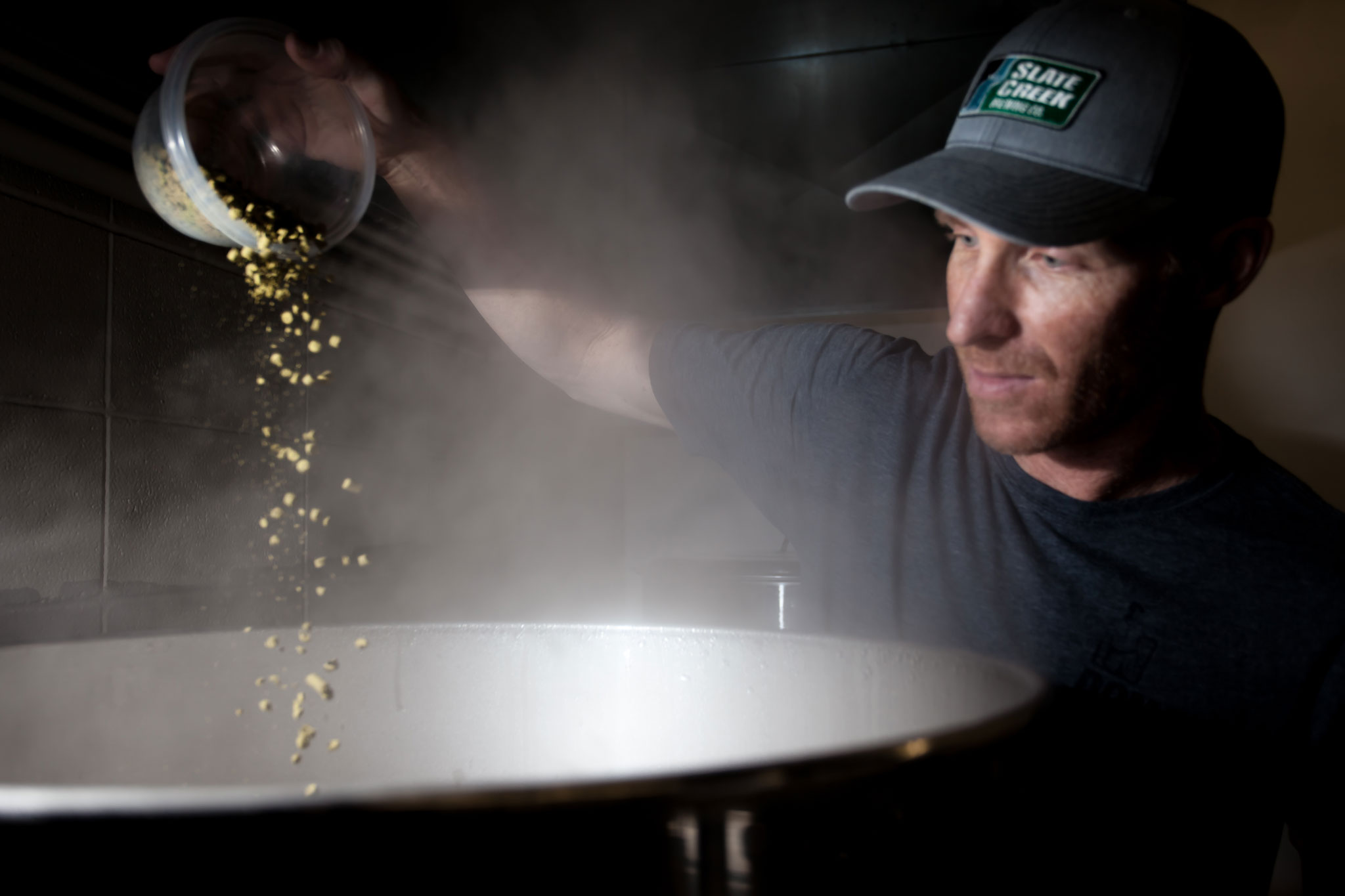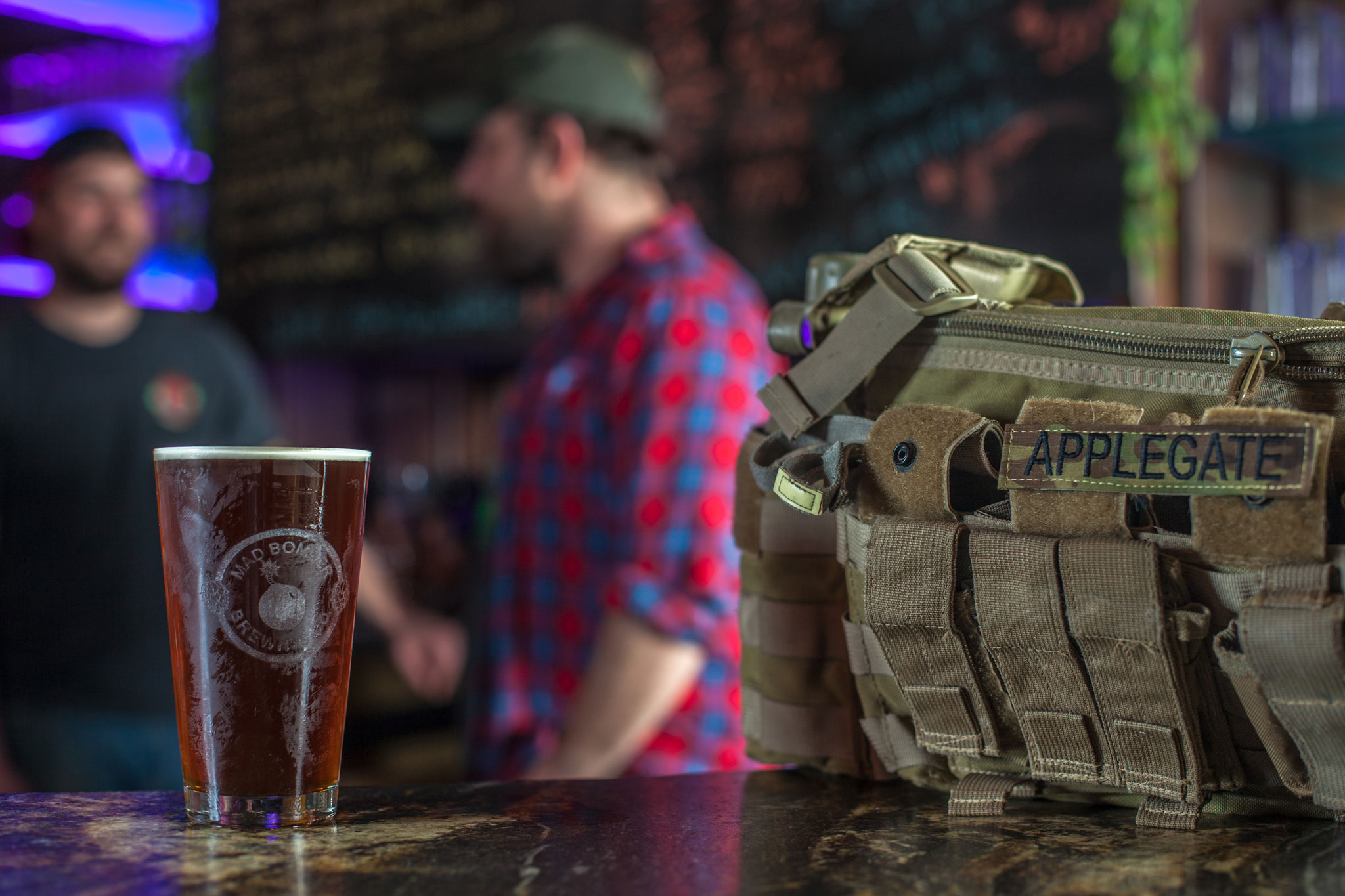Mad Bomber
The soft white of rough cut pine tables contrasts perfectly the dim lighting typical of a taproom. Music mingles with the buzz of conversing patrons. A few men and women laugh together across the round bar over shared stories and light hearted comments. A couple sit together at a corner table dressed in biking leather as if passing through. Several others come and go. There’s a fireplace with a couch and soft chairs nearby, a bookshelf stacked with an assortment of board games and books. The décor is US Army EOD/Bomb Squad—bomb detection device, flack vest, belt of ammo, photos of fallen buddies gracing the walls. A Velcro name plate reads, Applegate—but the mood is mellow, cheerful. This is Mad Bomber Brewing Company.
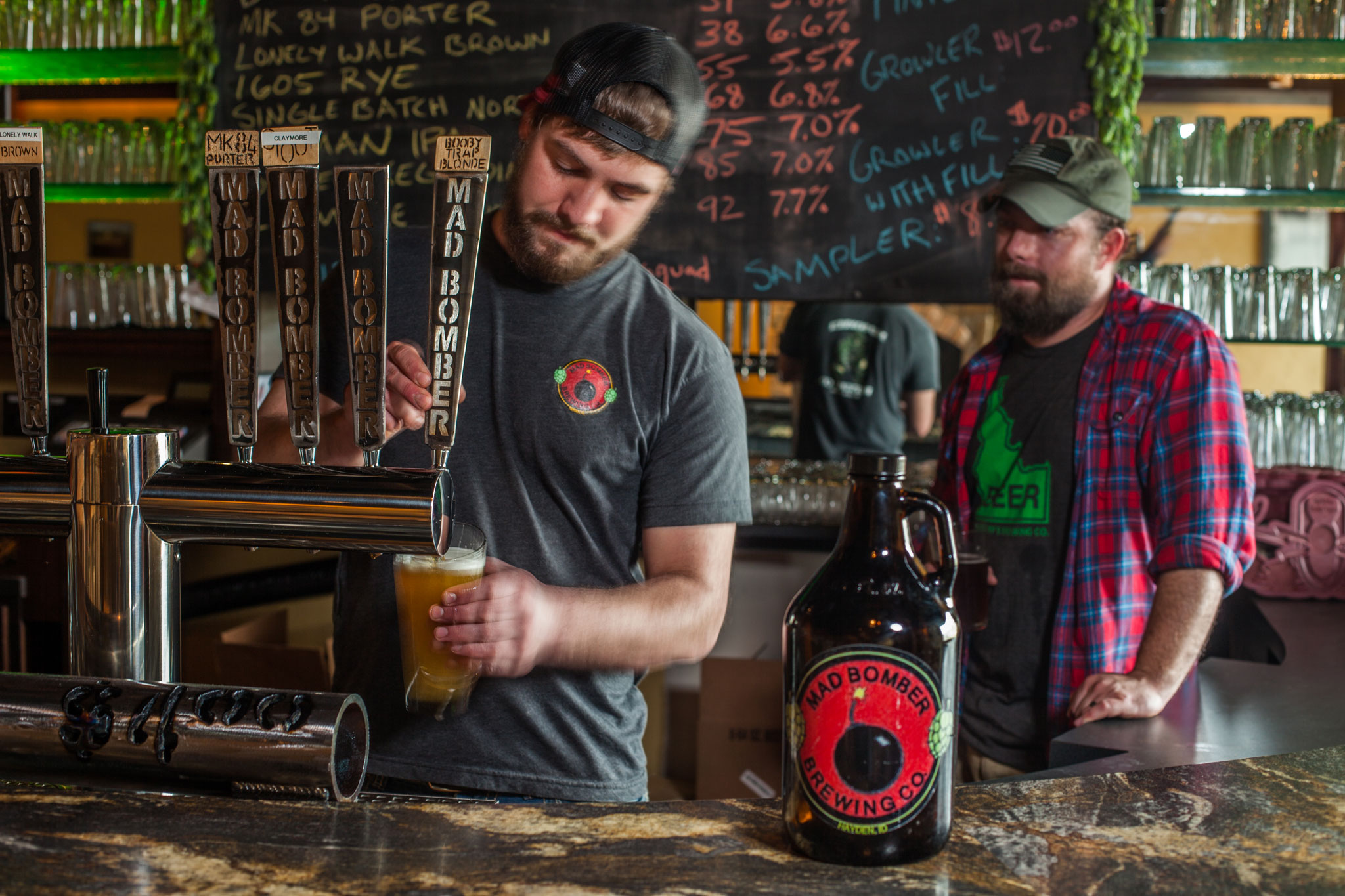
Tom Applegate, thick beard, baseball cap, bar towel swinging from his back pocket, wanders the taproom, engaging customers as he would old friends. He laughs easily at their replies, and offers to introduce them to yet another of Mad Bomber’s selection of freshly brewed craft beers.
Tom’s brother, Brian, stands behind the bar, chuckling with the crowd there as he fills a glass. Brian’s sporting a Selkirk Abbey T-shirt and Slate Creek hat, and drinking from a Laughing Dog glass. It seems he’s promoting every micro brewery but his own. And why not, they’ve all had a hand in Mad Bomber’s success. They’re all part of the same community.
In fact, ask Tom or Brian Apple- gate what makes Mad Bomber Brewery so successful, and they’ll give you the same answer; The community.
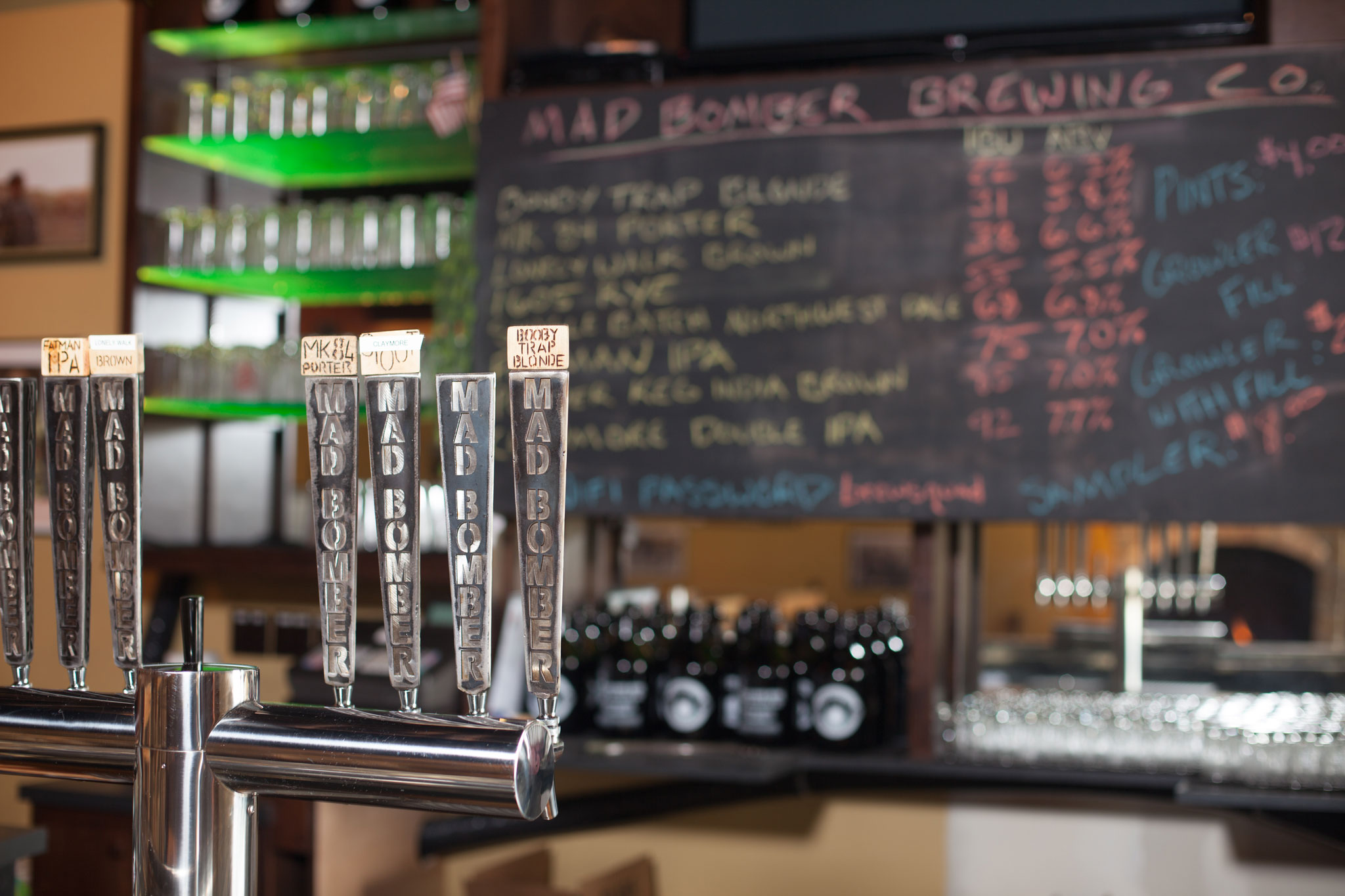
“This community has welcomed us with open arms,” Tom says. “They’re building the brewery around us, and we have nothing to do with it. We just make beer.”
For example, the tap handles were handcrafted of purple heart wood and donated by one patron, as was one of the pine tables. Much of the funding for Mad Bomber came from donations through Kickstarter, and they had over one thousand Facebook Likes before they ever opened their doors. One local micro brewery even gave Mad Bomber some much needed equipment on the agreement that they’d pay it forward to another brewery when they no longer needed it.
To show their gratitude, the Applegate brothers guarantee, as long as they’re working, the door at Mad Bomber will be unlocked, and they’ll be willing to serve up craft beer and enjoy some conversation. And they work hard to offer the best beer they can craft, from products purchased from local businesses. “I can’t expect people to buy local beer,” says Tom. “If I’m buying everything from [a mega corporation].”
Although Tom Applegate is a US Army Bomb Squad veteran, and a patriot, he says the military EOD décor is just that, décor. “The only thing we take seriously here,” he says, “is the beer.” And, as if to prove his point, a young couple picks a board game from off the bookshelf to enjoy with their beer.
“Scrabble,” Tom laughs. “I love to see that!”

Selkirk Abbey
Jeff Whitman, a half empty glass in hand, offers me a beer. I politely decline, and he asks why. “I don’t drink,” I say. I think he’s only half teasing when he says he’s not sure he still wants to talk with me, but he leads me back and gives me the tour anyway.
“I was a good sailor,” Jeff says. “I drank a lot, and fought a lot.” But the Navy was never all he cared about. Well into his training as a Russian Linguist, Jeff met a girl. He requested permission to marry her, and was denied. Jeff married her anyway—is still married to her— and as a result was removed from linguistics training and forced into the world of computer technology. He blames the brewery on his wife; she’d given him some brewing equipment as a gift one year.
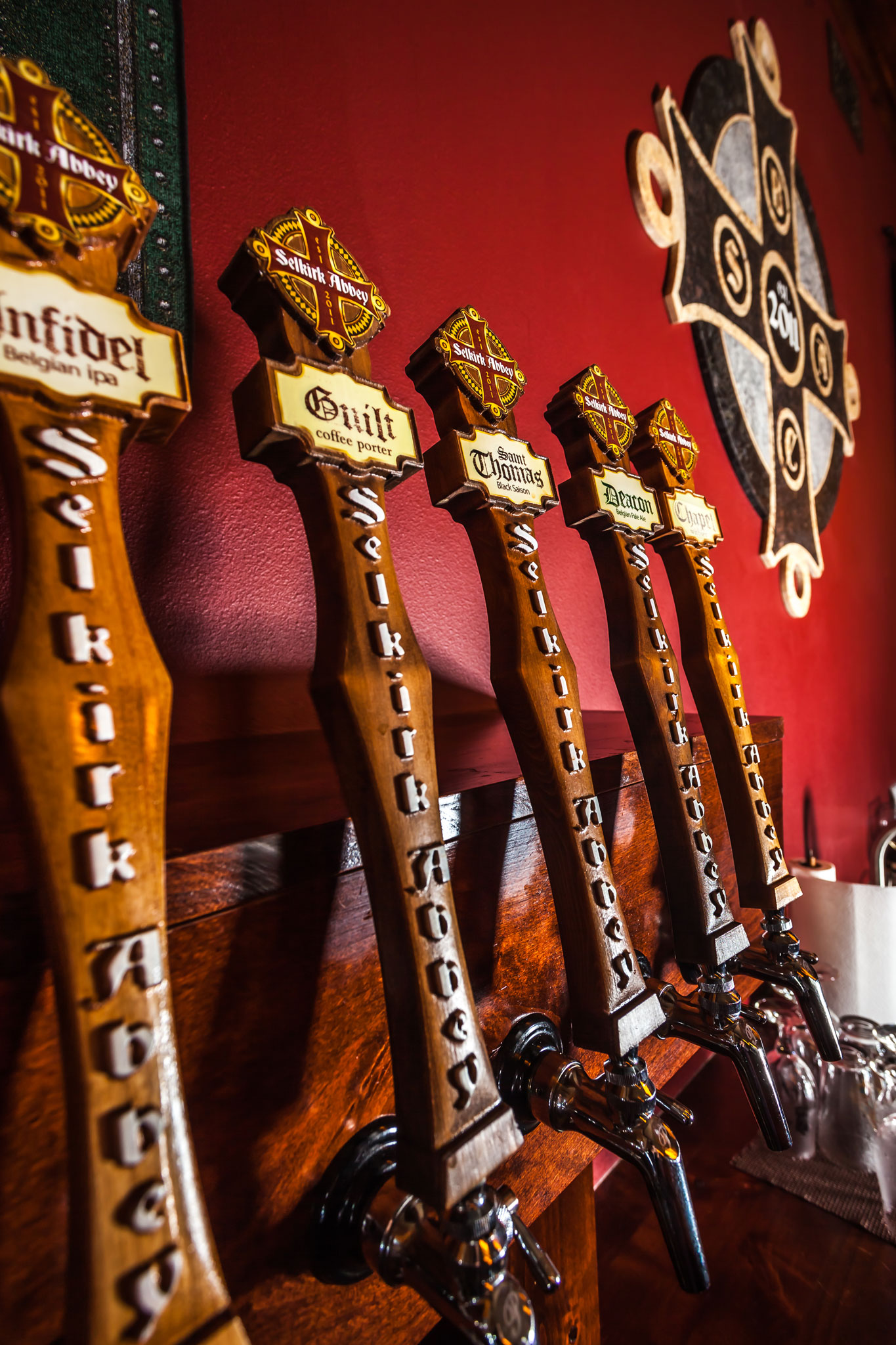
Jeff opened Selkirk Abbey while still working a full time job as a computer technician, a job he had grown to hate—he’d taken a pay cut three times after his original employer was bought out. “You just don’t treat your people like that,” he says, and tells of an old blue Cadillac his father owned when Jeff was around six years old. He’d learned that his father had sold the vehicle. “When I asked him why,” says Jeff. “He said, ‘I’ve got to pay my troops. Without my troops I’ve got nothing.’”
Jeff takes a drink from his glass. “I’ve never forgotten that,” he says. “He was a good man.”
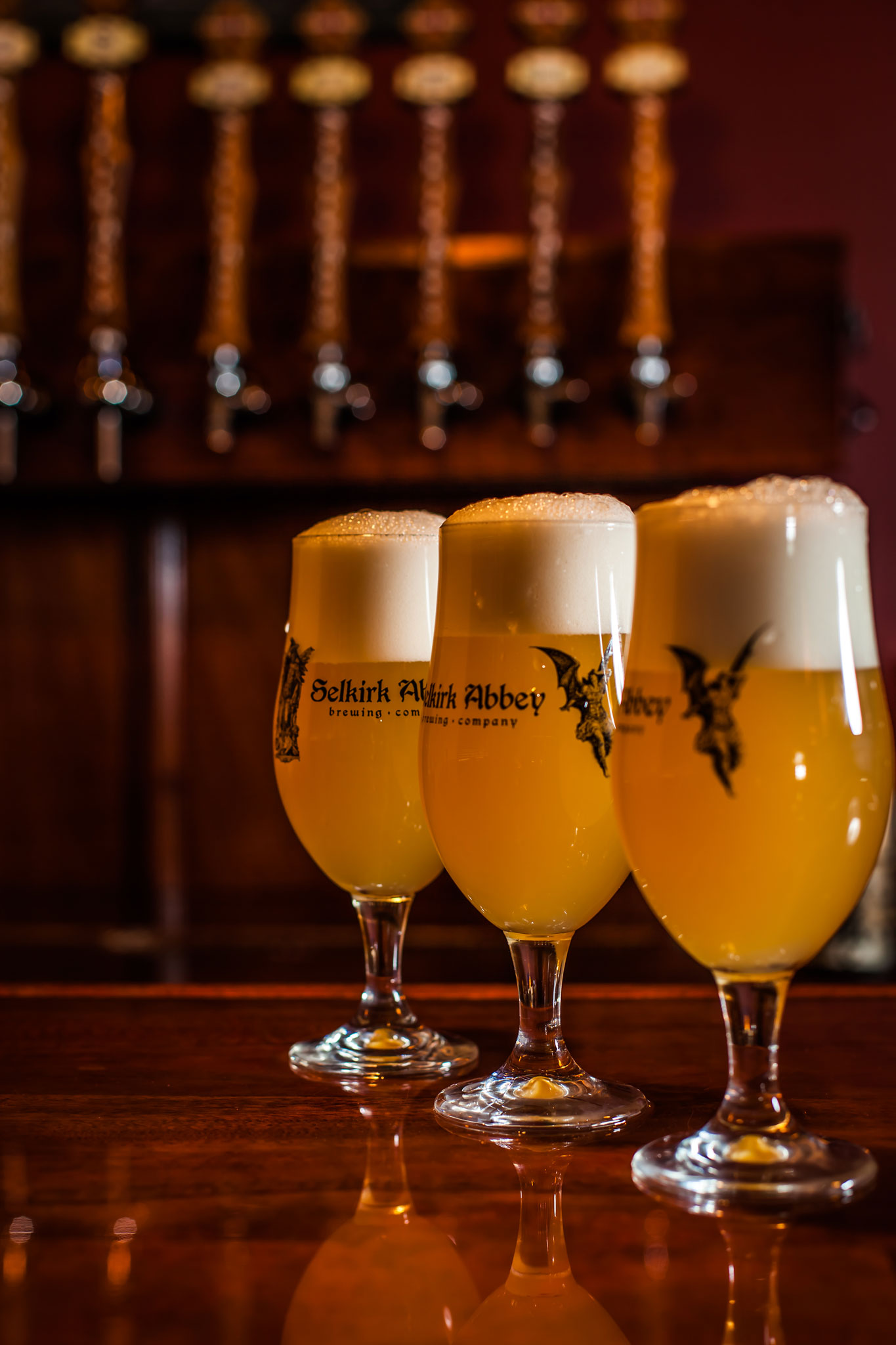
I watch as Jeff walks to a device and checks something I don’t see nor understand. “He hated my guts,” he says, a little humor in his voice. “I mean, I know he loved me. But he didn’t like me. We were too much alike.”
He gets quiet for a moment. The white noise of a large cooler fan fills up the empty spaces. He’s looking around the brewery, but not really seeing what’s there. Jeff says he visited his father just before he passed on. He was lying in a bed, Jeff standing near him.
“Jeff,” his father said, “I wish you weren’t so far away.”
“I’m not, Dad,” Jeff said. “I’m right here.”
“So you are, Jeff,” he chuckled softly. “So you are.”
Jeff turns to me, briefly. “That’s the last conversation we had,” he says, and looking around again, nods approvingly. “I think he’d be proud.” Then he looks at me again and, with a big grin, raises his glass. “He’d certainly drink the beer,” he laughs.
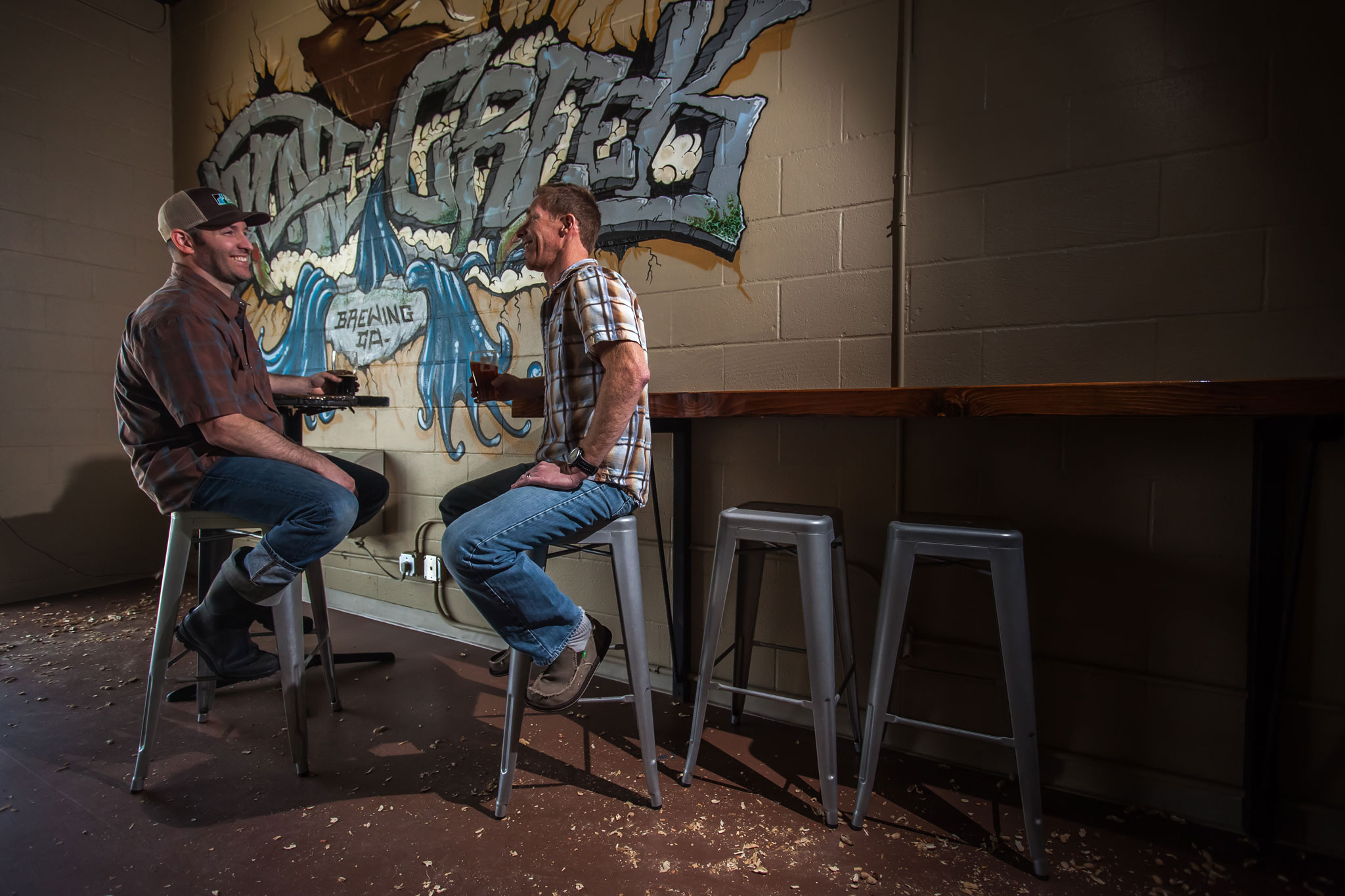
Slate Creek
For Jason and Ryan Wing of Slate Creek Brewing Company, the joy of craft beer is not only found in drinking it, but in both the science and the art of the brewing. Although there are four main ingredients in brewing beer— water, malt, barley, and hops—these brothers don’t believe in limiting the possibilities. One example of this was an experimental beer Jason created out of sheer curiosity and called Superfreak, because it had “everything in it but the kitchen sink.” Adventurous by nature, the Wing brothers are always eager to try something new. “We’re always learning,” Jason says. “It can always get a little better.”
Story continues after a quick message from our sponsor below.
When discussing the science of all things Slate Creek, Ryan explains that their Harper’s Stout was originally brewed in his daughter’s closet. “It was the only place in the house,” he says, referring to a time prior to opening the brewery. “Where the temperature was consistently 68 degrees.” The science is about processes, measurements, temperatures, and ratios. Says Jason, it’s also about “reverse engineering a specific taste I have in mind.”
When it comes to the art involved in Slate Creek brewing, Ryan says that although the science is necessary, there’s also “a whimsy to it.” A freedom to test limits of the artist’s imagination, to stretch boundaries of their skill. Like any art, whether it be painting, writing, cooking, or brewing, the joy is in creating something new, something original. Something that connects with the audience on an individual level, and brings a sense of fulfillment to the artist.
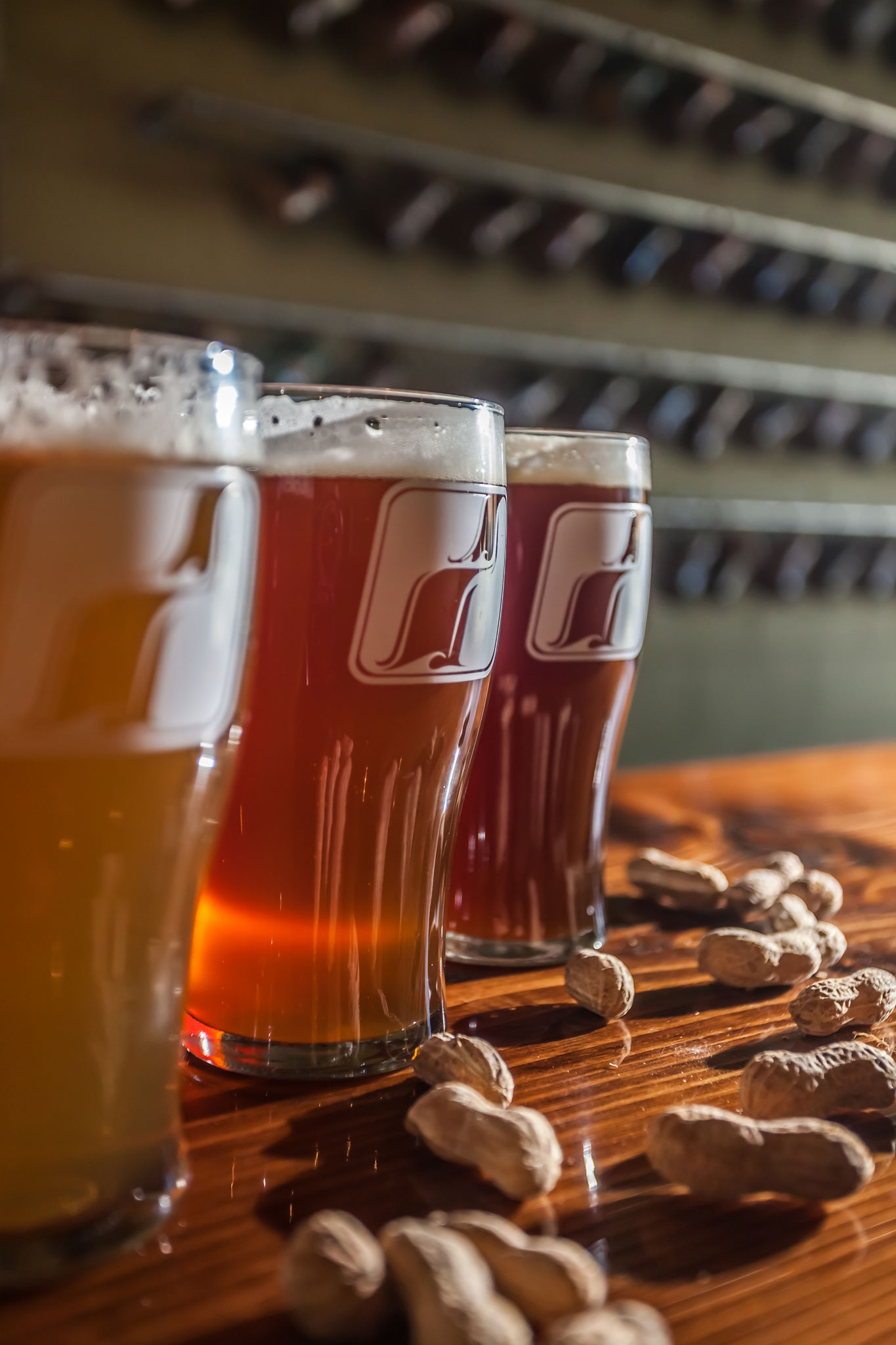
Jason and Ryan Wing grew up in an adventurous family, and, being very close in age, often shared interests. “We’ve always gotten along pretty well,” says Jason. So, when the opportunity came to open Slate Creek Brewery, it just made sense that they do it together. Jason comes from a law and entrepreneurial background, while Ryan, first earning his keep in the construction industry, eventually landed a position with a local Fire Department, where he still serves.
Walk into Slate Creek Brewery and you are walking into a place where the north Idaho outdoors matters; right down to the selection of craft beers—Salmon Run, Mountain Monk, Alpenglow Amber, and Paddleboard Porter to name a few. You’ll find friendly, mild Coeur d’Alene hospitality, outdoor photos on the walls, and even a wooden canoe hanging over the taproom entrance. There’s nothing about Slate Creek that doesn’t say “proud Idaho micro brewery.” N
By Toby Reynolds
As Featured In: Summer/Fall 2014
